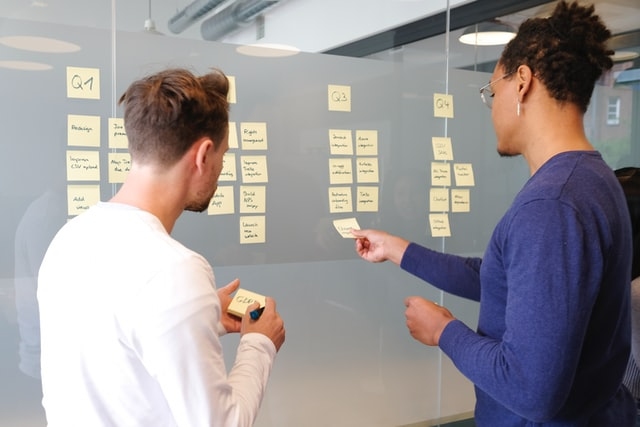As a good employer, you’ll have regular learning sessions at work for your employees. This will help them keep up to speed on industry standards and offer their best work when they’re on the clock. However, it’s not enough to have a training session, though. You also need a retention strategy to keep that knowledge at the forefront of their minds.
Here are seven strategies you can use to aid retention and make that learning stick.
1. Make use of social learning

Social learning is the practice of engaging with fellow learners when you’re being trained in an idea or skill. You need to have peers to observe and emulate to learn. You can use this to help your employees retain the information you give them.
When training, have your employees collaborate on projects or ideas. This will help them understand the material and retain more of it over time.
2. Bite sized learning
There’s nothing worse than being bombarded with information over a long training session. The human brain isn’t designed to take in so much info at once. Instead, you need to break that learning down into bite-sized chunks to be able to retain everything you’re being shown.
Remember this when planning training for your employees. Look into micro learning, which breaks learning down. You can use a time tracker to help keep employees on task and allow them to log their learning sessions. You’ll see they find it much easier to retain info this way.
3. Create an emotional connection
This doesn’t sound feasible in theory. When you’re talking about learning at work, can you create an emotional connection that helps employees keep the knowledge they’re being given? It’s more important than you’d think to create a narrative. It provides the learner something to hang that learning and understand what they’re being told.
The story can be as simple as a story about a customer and how training staff shapes their experience. Using any kind of narrative will help them retain that information.
4. Make learning active

Remember sitting in school and having to listen to long lectures? It certainly wasn’t the best way to learn, as you’d get bored and zone out almost right away. It’s not the best way to learn, so you don’t want to be doing this with your employees. Instead, you need to engage them as much as possible, allowing them to collaborate and work on ideas.
When you get them to participate, they will retain more as they’re actively learning. There are lots of different ways you can do this. This can be as simple as creating break out rooms for them to create a presentation or working in a simulation where they put these new skills to the test. There will always be a way for you to get learners involved.
5. Use visual learning
There are several different ways that people learn, and you need to be able to engage your employees in different learning styles to retain info. For example, visual learning is a way to encourage learners to take in more information and retain it. Around 83% of the information your brain processes are visual data. If you add more images to your learning materials, it will be a lot easier for your learners to process what you’re giving them.
You can use imagery in several ways to help put across information in an easy and digestible format. Try using images more often to improve retention.
6. Test learner’s knowledge
The idea of quizzing employees may seem too much like making them sit an exam, but it doesn’t have to be as formal and rigid as that. Quizzing them to see what they’ve learned is essential, as you need to know what they’ve retained and what they didn’t.
This works with creating more bite sized learning modules. You can quiz employees at the end of each module to test what they’ve learned. This helps cement the learning for them too and is much easier than having to remember everything after days of learning.
7. Create a strong learning culture
There are lots of obstacles to learning in the workplace. You need to establish a true learning culture in your workplace, to ensure that learners retain what you teach them.
With these tips, you’ll be able to help your employees manage their learning and retain more of what you teach them. That enables you to create a stronger and more knowledgeable workplace so you should start putting these tips into practice now.
Author Bio
Madeline Miller is a productivity blogger with Lia Help and Big Assignments. She writes about office life and HR.

